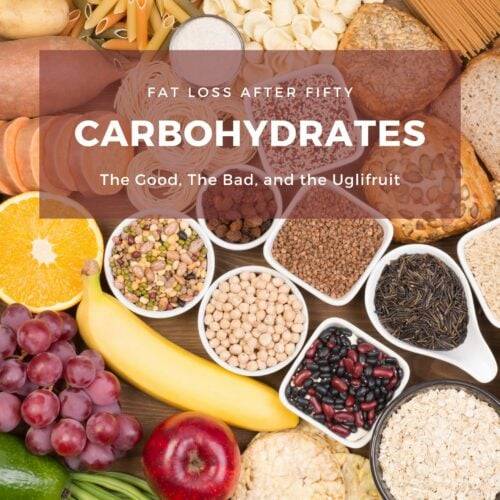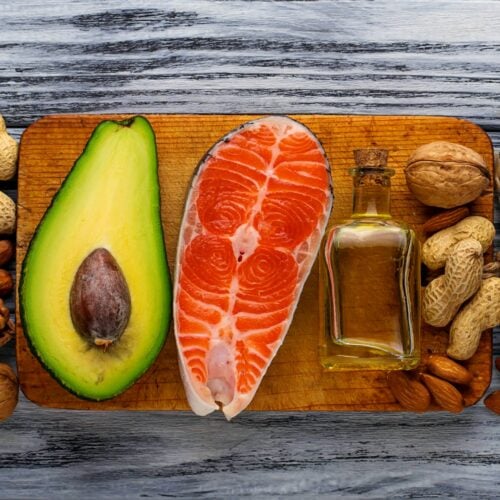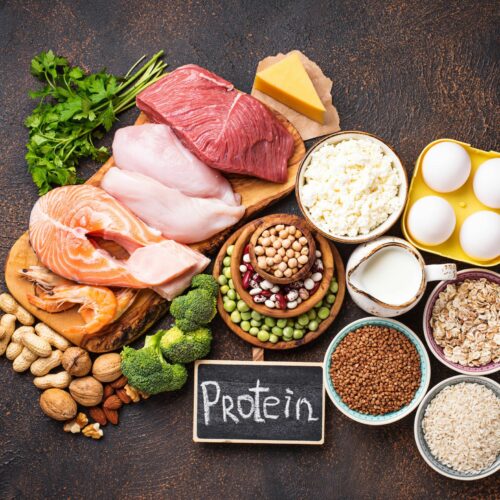Protein, the wonder stuff
Protein and fat loss are tightly connected. Let’s ditch the term “losing weight.” Weight is made up of muscle, fat and water. We don’t want to dehydrate. We don’t want to lose muscle mass. We only want to lose unsightly fat. Meet the magic stuff: protein

Why is Protein Important During Fat Loss?
Protein is critical for maintaining muscle mass during weight loss. When you cut calories to lose weight, your body may start to break down muscle tissue for energy, which can slow down your metabolism and make it harder to continue losing weight. If you are over fifty, that muscle will become progressively harder to regain as you continue to age. By consuming enough protein, you can help to prevent this muscle loss and keep your metabolism chugging along.
In addition, protein is more satiating than carbohydrates or fat, which means it can help you feel fuller for longer. This can help you stick to your calorie deficit without feeling hungry or deprived.
Check the Food Judgement at the Door
Know what’s magic about protein? You can get it from so many places. It’s strength is also it’s weakness. Food Judging. We’ve all run into militant attitudes of food-based moral superiority and consumption bias. Here we are not going to make any value judgements about protein sources. This is information with which to arm yourself to succeed in your fat loss journey. You choose the source that works for you and your unique combination of biological, emotional and cultural factors. I am just the messenger telling you all about what you need to know to begin the process to making informed decisions about your own health journey without any marketing hype attached.
The variety of Protein Sources
When it comes down to where to get protein, you have options and options within options. Starting with plant-based and animal-based options. Plant-based protein sources like beans, lentils, tofu, and nuts are great for vegetarians and vegans and can provide a wide range of nutrients. Animal-based protein sources like poultry, pork, beef, and fish are packed with high-quality protein, along with vitamins and minerals like iron, zinc, and vitamin B12. Seafood is an excellent source of protein and healthy fats, like omega-3 fatty acids. Dairy products like milk, cheese, and yogurt are also excellent sources of protein, especially for those who are not lactose intolerant. With such a variety of protein sources available, it’s easy to find options that fit your dietary needs and preferences. Lets take a look at the advantages and disadvantages of a few of these sources. View these as things to consider
Plant-Based Protein Options
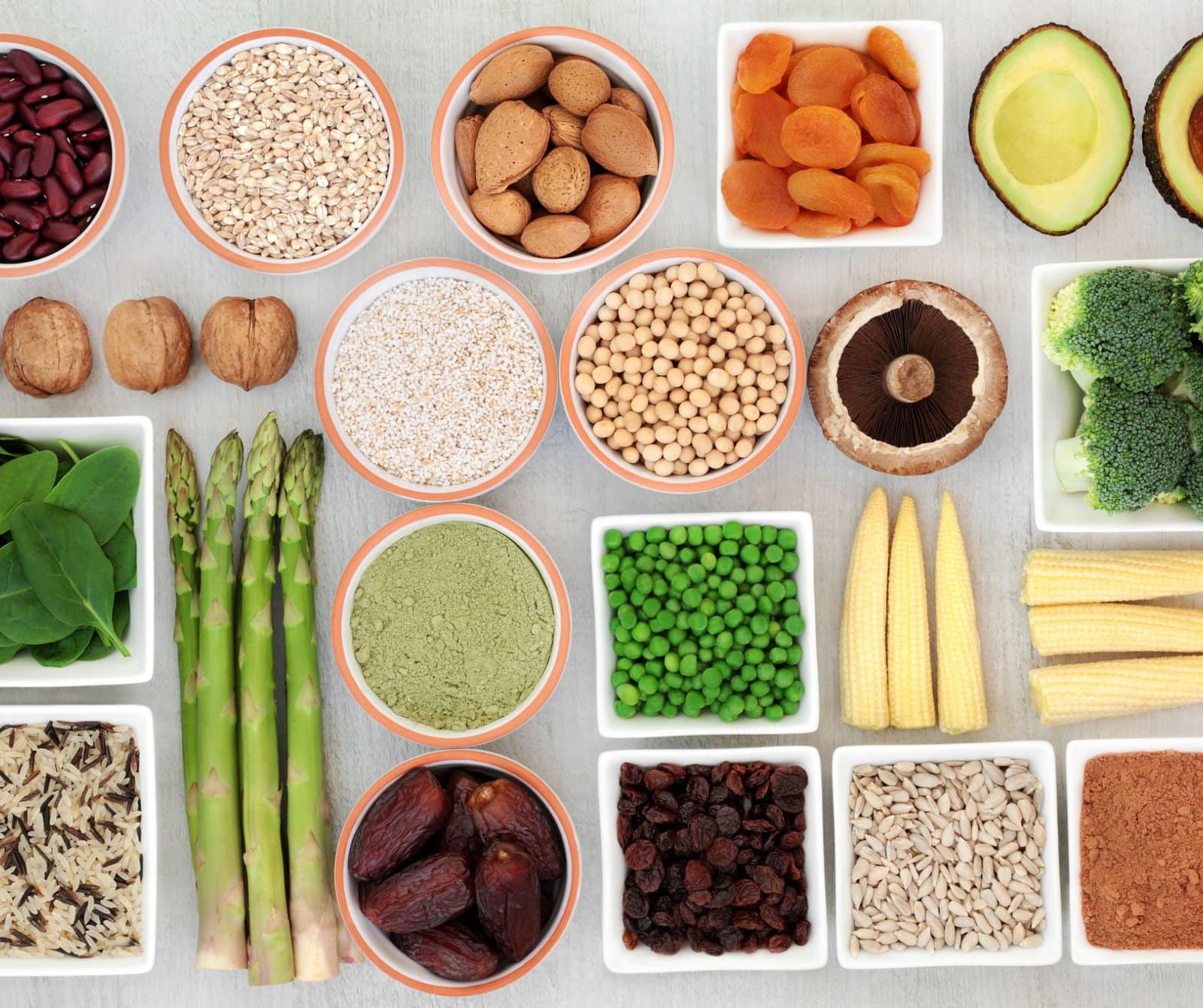
Plant-based protein sources like beans, lentils, tofu, and nuts are often touted for their health benefits and sustainability. However, they can have some downsides when it comes to fat loss.
Advantages:
- Plant-based protein sources tend to be lower in calories than animal-based options, which can be helpful for fat loss.
- Plant-based protein options often have little or no cholesterol, important to people with cardiac conditions.
- They are also high in fiber, which can help you feel fuller for longer.
- Plant-based proteins are often less expensive than animal-based options.
Disadvantages:
- Many Plant-based options are not complete, meaning they do not contain all of the essential amino acids your body needs. To get all of the necessary amino acids, you may need to combine different plant-based protein sources, such as beans and rice.
- You may need to supplement with protein shakes, bars or powder in order to meet your protein needs of 0.75 to 1 gram per pound of body weight per day. Yeah, dead horse, I know.
- Some plant-based proteins, like nuts and seeds, are high in calories and fat, so it’s important to watch your portion sizes.
A list of Plant-Based Options
- Soybeans: Soybeans are one of the highest plant-based sources of protein, with about 36g of protein per 100g serving. Soybeans can be consumed in a variety of ways, such as tofu, tempeh, soy milk, and edamame.
- Lentils: Lentils are a great source of protein, with about 25g of protein per 100g serving. They’re also high in fiber, iron, and folate. Lentils can be added to salads, soups, stews, and curries.
- Chickpeas: Chickpeas, also known as garbanzo beans, are another high-protein legume, with about 19g of protein per 100g serving. Chickpeas are commonly used to make hummus or can be roasted for a crunchy snack.
- Quinoa: Quinoa is a complete protein, meaning it contains all nine essential amino acids. It contains about 14g of protein per 100g serving, along with fiber, iron, and magnesium. Quinoa can be used as a substitute for rice or pasta, or added to salads and soups.
- Hemp Seeds: Hemp seeds are a great source of protein, with about 10g of protein per 28g serving. They’re also high in healthy fats and minerals like magnesium and zinc. Hemp seeds can be added to smoothies, salads, and baked goods.
- Chia Seeds: Chia seeds are a good source of protein, with about 4g of protein per 28g serving. They’re also high in fiber, omega-3 fatty acids, and antioxidants. Chia seeds can be added to smoothies, yogurt, or oatmeal.
- Almonds: Almonds are a protein-rich nut, with about 6g of protein per 28g serving. They’re also high in healthy fats, fiber, and vitamin E. Almonds can be eaten as a snack, added to salads or used to make almond milk.
- Spinach: Spinach is a leafy green vegetable that’s surprisingly high in protein, with about 3g of protein per 100g serving. It’s also high in vitamins and minerals like iron and vitamin K. Spinach can be added to salads, smoothies, or used as a base for dips like spinach and artichoke dip.
- Broccoli: Broccoli is a cruciferous vegetable that’s not only high in protein, with about 2.8g of protein per 100g serving, but also a great source of vitamins and minerals like vitamin C, folate, and potassium. Broccoli can be eaten raw, steamed, or roasted.
- Peas: Peas are a good source of protein, with about 5g of protein per 100g serving. They’re also high in fiber, vitamin C, and vitamin K. Peas can be added to salads, soups, stews, or eaten as a side dish.
Fat Loss Awareness Notes
Eating purely plant based on a fat loss journey adds an additional layer of complexity to your process. Not only do you have to ensure that you are getting enough protein, you have to ensure you are getting enough complete protein within a calorie deficit. Plan on tracking macros in addition to calories AND plan on supplementation with protein shakes, etc.
Wrapping up Plants
So there you have it. Plant-based proteins are an excellent option for vegetarians, vegans, or anyone else looking to incorporate more nutrient-dense, fiber-rich foods into their diet. With a wide variety of options to choose from. With the options I have shown you. there are plenty of ways to meet your daily protein needs without consuming animal products, which contain cholesterol. Incorporating plant-based proteins into your meals. This can not only help you maintain muscle mass and support fat loss but can also provide a wide range of vitamins, minerals, and other essential nutrients.
I deliberately omitted delving into the plant meats. They are processed, high in fat and fat calories and generally not that great for you. Sure, have some within the context of an 80/20 eating style. But they are not a staple protein source. Go easy on that stuff. “plant-based” is not a synonym for healthy. Otherwise, go exploring my friends! With all the different plant-based protein sources, you can add variety and flavor to your diet while also supporting your health and well-being. However. For protein density the animal-based proteins offer another set of options which I will divide into Meats and Animal Produce.
Meat, the protein choice of the ages
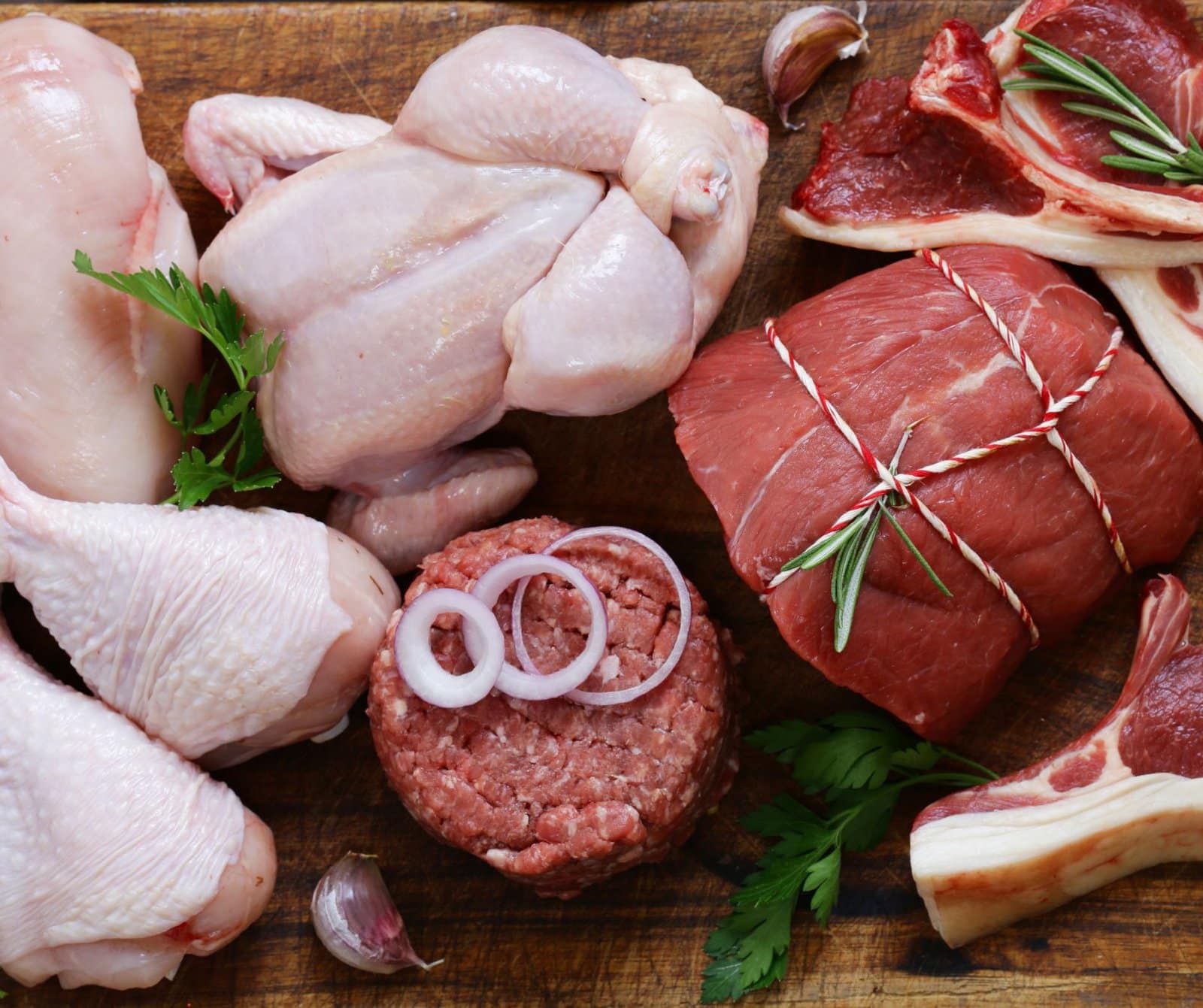
Not a hidden mystery: Meat has been a dietary staple for humans for thousands of years. It provides a rich source of complete protein, which means you don’t have to juggle plants to get all 9 amino acids that the body must have. Meat also contains vitamins, minerals and fats: some good, some not so much. Meat is also naturally low in carbohydrates, making it popular for the ketogenic-family of eating styles. Whether you prefer chicken, beef, pork, or fish, there are many options to choose from when it comes to incorporating meat into your diet. However, there is some debate about the health effects of consuming meat, and some people choose to avoid it for ethical or environmental reasons. In this blog post, we’ll explore the benefits and drawbacks of meat as a protein source and give you a nice list ordered by fat content. When it comes to meat fat, a good rule of thumb is, if something is solid at room temperature, like say, that lovely piece of marbled piece of kobe beef? You might want to limit that. Hey, wouldn’t you rather have that nice piece of salmon?
The advantages and Disadvantages of dead mammal
Advantages:
- High-quality protein: Meat is a high-quality protein source, meaning it contains all nine essential amino acids that our bodies need to function properly.
- Rich in nutrients: Meat is also a good source of important nutrients like iron, zinc, vitamin B12, and omega-3 fatty acids.
- Satiating: Protein, including meat, can help keep you feeling full and satisfied, making it easier to stick to a calorie-controlled diet.
- Versatile: Meat can be prepared in a variety of ways, making it a versatile and tasty addition to many meals.
Disadvantages:
- High in saturated fat: Some types of meat, like beef and pork, can be high in saturated fat, which can contribute to heart disease and other health problems when consumed in excess.
- Environmental impact: The production of meat can have a significant environmental impact, including greenhouse gas emissions and deforestation.
- Ethical concerns: Some people choose to avoid meat for ethical reasons, such as animal welfare or concerns about factory farming practices.
- Cost: High-quality meat can be expensive, making it difficult for some people to include it in their diet regularly.
Overall, meat can be a healthy and satisfying source of protein when consumed in moderation and as part of a balanced diet. It’s important to consider the potential drawbacks of meat consumption, such as its impact on the environment and animal welfare, and choose high-quality, sustainable options whenever possible.
The advantages and Disadvantages of dead Fish
Advantages:
- Rich in nutrients: Fish is a good source of high-quality protein, vitamins, and minerals, including omega-3 fatty acids, which are important for heart health and brain function.
- Low in saturated fat: Most types of fish are low in saturated fat, making them a heart-healthy protein option.
- Versatile: Fish can be prepared in a variety of ways, from grilled to baked to fried, making it a versatile and tasty addition to many meals.
- Sustainable: Many types of fish are sustainably sourced and have a lower environmental impact than meat.
Disadvantages:
- Mercury content: Some types of fish, especially larger predatory fish like tuna and swordfish, can be high in mercury, which can be harmful in large amounts.
- Overfishing: Some types of fish are overfished, making them less sustainable and potentially harmful to the environment.
- Cost: High-quality fish can be expensive, making it difficult for some people to include it in their diet regularly.
- Allergies: Fish allergies are common and can be severe in some cases.
Overall, fish can be a healthy and delicious source of protein when consumed in moderation and as part of a balanced diet. It’s important to choose sustainably sourced fish and be aware of the potential risks of mercury exposure. For those with fish allergies or dietary restrictions, other protein sources like plant-based proteins or lean meats can be good alternatives.
The List, Healthiest first
Fish:
- Salmon: Salmon is one of the best sources of protein with healthy fats, including omega-3 fatty acids, with about 12g of fat per 100g serving.
- Sardines: Sardines are a small, oily fish that are high in protein while being rich in omega-3 fatty acids, with about 11g of fat per 100g serving.
- Tuna: Tuna is another great source of protein with omega-3 fatty acids, with about 6g of fat per 100g serving.
- Rainbow trout: Rainbow trout is a fatty fish that’s also high in omega-3 fatty acids, with about 5g of fat per 100g serving.
- Mackerel: Mackerel is a fatty fish that’s high in omega-3 fatty acids, with about 11g of fat per 100g serving.
Meat:
Turkey: Turkey is a lean meat that contains healthy fats, including monounsaturated fats, with about 2g of fat per 100g serving
Chicken: Chicken is also a lean meat that contains healthy fats in the form of monounsaturated fats, with about 3g of fat per 100g serving.
Pork: Pork is a meat that’s higher in fat than chicken or turkey, but it still contains healthy fats, including monounsaturated fats, with about 9g of fat per 100g serving.
Beef: Beef is a meat that’s higher in fat than pork, but it contains healthy fats, including monounsaturated fats, with about 18g of fat per 100g serving.
Lamb: Lamb is the fattiest meat on this list, but it still contains healthy fats, including monounsaturated fats, with about 25g of fat per 100g serving.
So here we are. Both meat and fish will contain fats. Fish will mostly be in the healthy fat category, where pork and beef will contain saturated fats in quantities that you should limit, especially if you are older. Remember that the type and amount of fat can vary depending on the cut and cooking method. When choosing meat and fish protein options, focus on leaner cuts and cooking methods that limit added fat.
Yes I totally left out dead reptiles and amphibians. You’re just going to have to see to your own list with the health benefits of snake and frog.
Fat Loss Awareness Notes
Always remember that the major metric in any weight loss/gain program is calories. Protein has 4 calories per gram. Fat has 9 calories per gram. This is why the leaner choices such as chicken and turkey should be your fat loss journey meat mainstays. Fish, while great… mercury. So, study the limits before going full-on pescatarian. Save that marbled piece of beef or lamb for a special occasion. I understand snake is lean as well, but you’ll have to explore that.
Dairy and Eggs: Animal Protein from unmentionable places
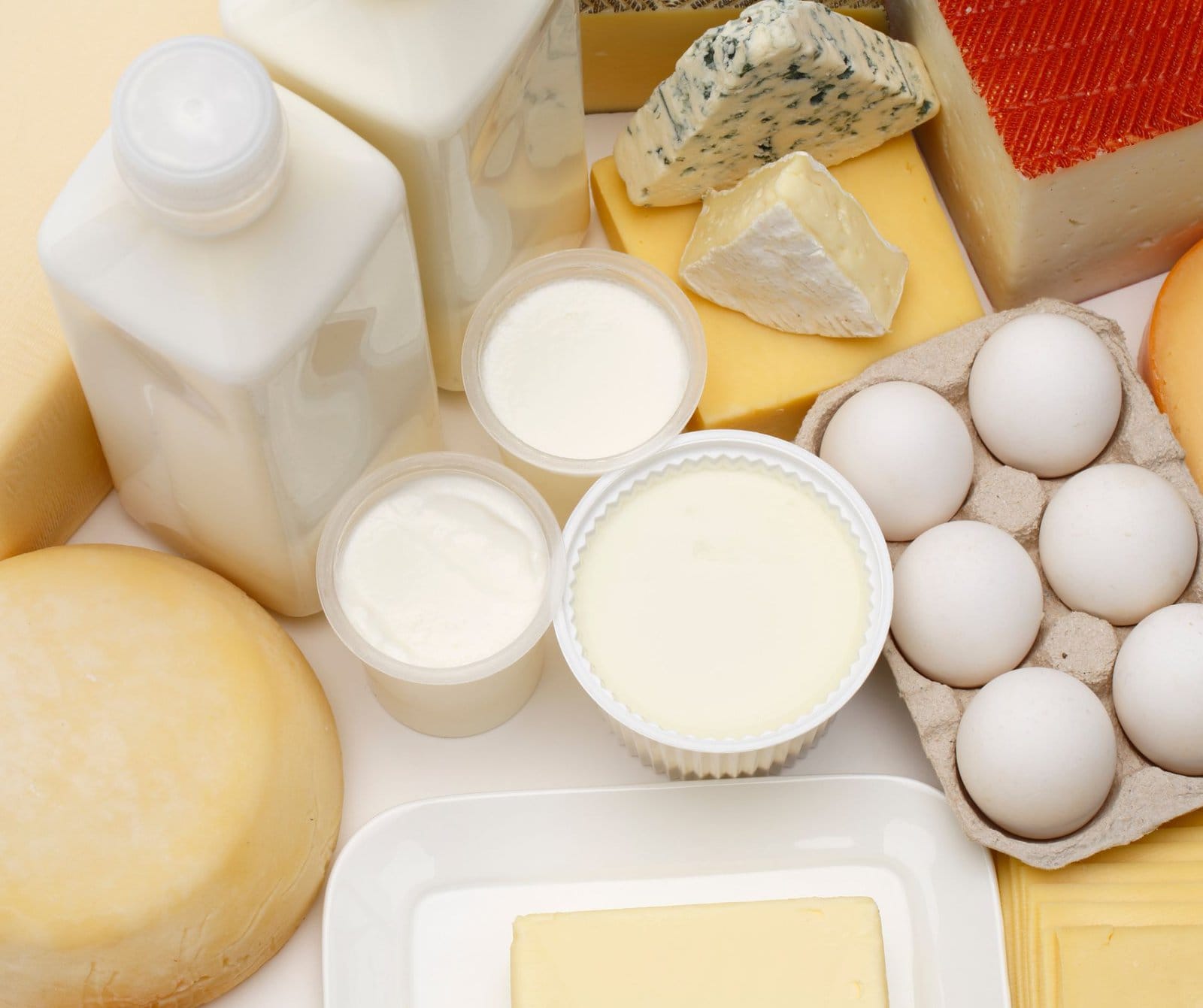
Dairy and eggs are last up on our mission of discussing protein sources that offer a variety of benefits to the body. Dairy is several things and eggs is just eggs, any style. Both dairy and eggs contain a high-quality protein that can help support muscle growth, repair, and recovery. Both come from places on the animal that we would just as soon not discuss in great detail. It’s ok.
In addition, dairy products like milk, cheese, and yogurt are excellent sources of calcium, which is important for bones and teeth. Eggs are also a great source of vitamins and minerals, including vitamin D and choline. However, there are also some potential drawbacks to consuming dairy and eggs, including allergies, lactose intolerance, and concerns about animal welfare and environmental impact. In this blog post, we’ll explore the advantages and disadvantages of dairy and eggs as a protein source and provide tips for incorporating them into your diet in a healthy and sustainable way.
Advantages:
- Complete protein: Dairy and eggs are both complete protein sources, meaning they contain all of the essential amino acids that our bodies need to function properly.
- Rich in nutrients: Dairy products like milk, cheese, and yogurt are excellent sources of calcium, which is important for maintaining strong bones and teeth. Eggs are also a great source of vitamins and minerals, including vitamin D and choline.
- Versatile: Both dairy and eggs can be used in a variety of ways, from adding milk to smoothies to using eggs in baked goods or as a protein-packed breakfast option.
Disadvantages:
- Allergies: Dairy and egg allergies are common and can be severe in some cases.
- Lactose intolerance: Some people are lactose intolerant, meaning they cannot properly digest lactose, a sugar found in dairy products.
- Ethical concerns: Some people choose to avoid dairy and eggs for ethical reasons, such as concerns about animal welfare or environmental impact.
- High in saturated fat: Some dairy products, like butter and cheese, can be high in saturated fat, which can contribute to heart disease and other health problems when consumed in excess.
- The cost of eggs in March 2023: Nothing more need be said.
Overall, dairy and eggs can be a healthy and tasty source of protein when consumed in moderation and as part of a balanced diet. It’s important to choose high-quality, sustainable options whenever possible and to be mindful of potential allergies and intolerances. For those who choose to avoid dairy and eggs, there are many plant-based protein sources available that can provide similar benefits.
Fat Loss Awareness Notes
High in calories. Use fat-free versions, not to avoid the fat, but to avoid the fat calories; 9-per-gram remember? Unless you are doing keto of course. Oh. I haven’t met anyone actually doing keto right yet. So far, they all just do their own little version, or the one they’ve been sold. And yeah. Ketogenesis is a biological process that requires some precision to control. People think keto is easy-peasy because it’s popular. No, you have to work it. Like any structured approach to fat loss. And still requires a calorie deficit for that fat to convert to energy and vanish back into the aether. Sorry.
To conclude
To wrap all this up, protein is an essential macro that plays a critical role in muscle growth, repair, retention and recovery. Incorporating a variety of protein sources, including meat, fish, plant-based proteins, dairy, and eggs, into your meal planning can help support your fat loss goals.
While losing fat, I can’t stress enough that much of what you do in the initial stages of your journey is and should be guided by a sense of experimentation. Finding strategies that are going to work for you next week, next month, next year and five years from now.
The biggest thing to remember is that protein is required for building and maintaining muscle mass, supporting healthy weight management, and improving overall health and well-being. When it comes to fat loss, consuming adequate protein prevent muscle loss while supporting satiety, or the feelings of fullness, which can make it easier to maintain a daily calorie deficit. By choosing high-quality proteins from a variety of sources and incorporating them into your meals and snacks, you can support your fat loss journey while also enjoying a variety of delicious and satisfying foods.
Love and Blessings!
A tool to help you balance
A decent tool that can help you ensure you are getting enough protein is Cronometer. A tracking app for monitoring calories and balancing macros. The free version for individuals should be great for most fat loss efforts. This isn’t sponsored. Its just the tool I use and it works well and easy for me, though I use the Pro version for advanced data because I just have to nerd out on this stuff. You don’t have to nerd.
Tune In Next Tuesday!
Related Articles
